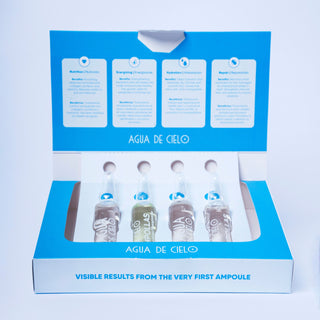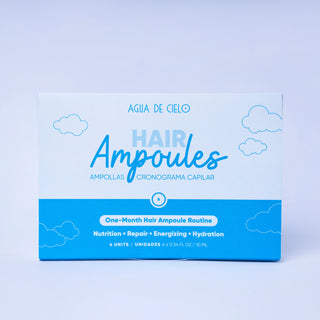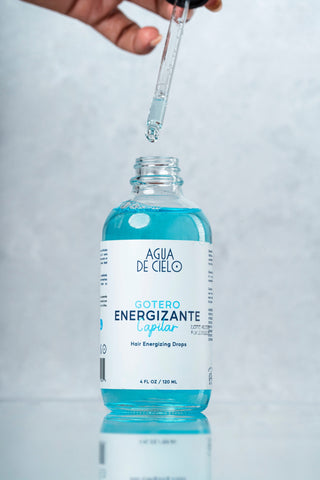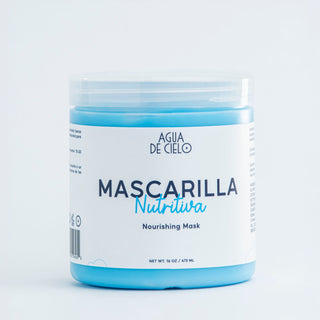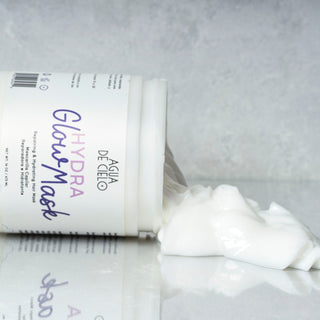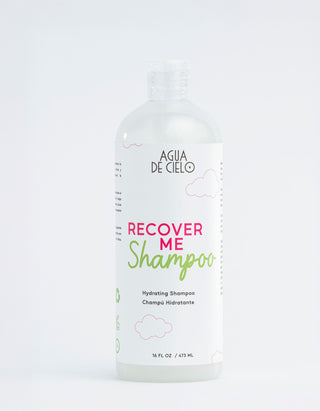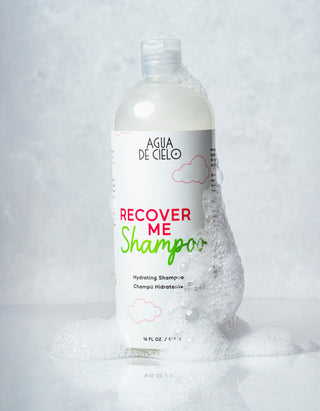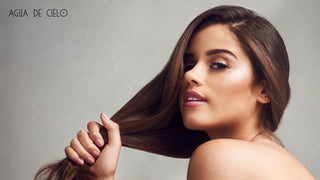Understanding hair porosity is important to ensure you aren’t wasting time and money on the wrong hair products.
Hair porosity is more than just a fancy-sounding word.
It's how well your hair absorbs and keeps in moisture.
So read along so you'll have more information on understanding the porosity of your hair so that you can add the right products to your hair care routine.
Table of Contents
What is Hair Porosity?
Knowing your hair porosity is important to unlocking the full potential of your hair care routine.
Hair porosity refers to your hair's ability to absorb and keep moisture. Picture your hair as a sponge. The more water it can absorb and keep, the more porous it is. The less water, well the less porous it is. Now think of how a moist sponge feels compared to a dry sponge. That's hair porosity.
Hair porosity is broken out into 3 levels:
- High porosity hair
- Medium porosity hair
- Low porosity hair

Although a wet sponge may feel nice, having high porosity hair isn’t always a good thing. We’ll dive into this more later in the post.
Why is Understanding Hair Porosity Important to You?
So knowing how well your hair retains water is cool and all, but why is it so important? Knowing your hair’s porosity can drastically change your hair care routine. Just like how you'd choose skincare products based on your skin type. Knowing which hair porosity type you have can guide you in selecting the right products. For example, high porosity hair products might focus more on sealing in moisture and strengthening the hair shaft. Whereas low porosity hair products might focus on penetration and deep hydration.
Hair Porosity Test: How to Know Your Hair Porosity
Before we dive into how to care for each type of hair porosity, let's talk about the Hair Porosity Test.
It's time to play another little game. But don’t worry, this one is quick and you can share it on your next family game night! It’s called the Hair Porosity Test and it’s quite simple. All you have to do is:
- Fill a glass or bowl with room-temperature water
- Take a strand of clean hair and drop it into the water
- Watch and observe
If your hair sinks to the bottom, you have high porosity hair. If it floats, you have low porosity hair. If it stays somewhere in the middle, then you might have medium porosity hair.

So take a short break and try out the Porosity Hair Test for yourself. Once you know your hair porosity, we can break down each level and how to treat it to boost your hair care regime.
Now that you know your hair porosity, you’re ready to learn what makes each one different and how to care for it.
High Porosity Hair
So your hair loves to keep its H2O. This type of hair has raised cuticles, allowing moisture to be easily absorbed (think wet sponge). Keep in mind, just as it can easily take in water, it can lose it just as fast. This can make high porosity hair prone to frizz and tangling in humid conditions. Since its air dries quickly, it can often feel dry, which sounds contradictory to its naming.
Hair care tips for high porosity hair
High porosity hair requires extra care to prevent moisture loss and damage. Here are some tips to help you care for your high porosity hair and some high porosity hair products that we recommend:
- Moisturize, moisturize, moisturize (and finally, moisturize): Hydration is important for high porosity hair. Try to use hydrating shampoos, conditioners, and leave-in treatments. These will leave your hair with much-needed moisture. You can try our Hair Hydrate to keep your hair hydrated and protected–without weighing it down. It's a 2 in 1 leave-in and heat protectant made with yogurt, jojoba oil, castor oil, and cocoa.
- Seal in moisture: Look for high porosity hair products rich in proteins. These can help fill in the gaps in your hair cuticles. Avoid harsh chemicals and heat treatments as they can further damage the hair.
- Deep condition often: Deep conditioning treatments are essential for high porosity hair. Use a hair mask made with proteins and moisturizing ingredients to help repair and strengthen your hair. Consider adding steam or heat during this to improve the absorption of nutrients.
- Keep your hair safe from the sun and bad weather: Hair that soaks up lots of moisture gets hurt easily by the sun and rough weather. Wear hats or use heat protection sprays to shield your hair when needed.
High porosity hair is also more prone to tangling, which if untreated can lead to matted hair. This is because this type of hair soaks up moisture rapidly but loses it just as fast.
By following these tips, you can help restore and maintain the health of your hair. You'll be able to reduce frizz, prevent dryness and make it more manageable.
Some good high porosity hair products to try
If you have high porosity hair, you want to look for products with the words “moisturizing” or “hydrating”. To get you started, you can look at our:
- Recover Me Shampoo: an organic hydrating shampoo that deep cleans and hydrates
- Hair Regenerating Mask: a powerful hair mask with rich ingredients to deeply nourish and hydrate
- Hydrating Ampoule (part of our Hair Ampoules Set): for an intense dose of hydration in under 30 minutes
Medium Porosity Hair
If you have medium porosity hair then you’re in luck. This type of hair has the right balance of moisture which keeps it healthy. It can absorb just the right amount of water, without exposing itself to damage. But just because you have this hair type doesn’t mean that you shouldn’t give it the right care.
Hair care tips for medium porosity hair
Here are some tips to help you care for your medium porosity hair:
- Keep a balanced hair care routine: Medium porosity hair benefits from a balanced approach to moisture and protein. Include both moisturizing and protein-based products into your routine.
- Deep condition regularly: Deep conditioning treatments help restore moisture and improve hair's elasticity. Try to deep condition at least once a week or as needed to keep your hair hydrated and nourished. We recommend our Hydra Glow Hair Mask, an organic mask rich in plant-based proteins and biotin.
- Protect your hair from heat styling: Too much heat styling can lead to damage and dryness. Can’t stop the heat? Use heat protectant sprays, such as our Hair Hydrate, before using heating tools. Also, try to reduce heat settings whenever possible.
- Avoid over-washing: Medium porosity hair is more prone to becoming weighed down by excess oils. Wash your hair as needed to maintain a balanced scalp and avoid stripping away your hair's natural oils. Our Everything Serum 3 in 1 is the perfect pre-wash to help protect your hair and keep it looking fabulous. It contains four antioxidant-rich oils that are known for their hair-boosting properties.
By following these tips, you can keep your hair healthy, manageable, and full of life.
Low Porosity Hair
Okay, your hair floated so that leaves you with low porosity hair. Although this type of hair may sound like the worst of the three levels, it's not. It tends to be stronger and healthier looking than its higher porosity hair. Lower porosity hair is even less prone to frizz and grows faster. Given the name, it has less ability to keep moisture due to the cortex being laid closely together.
Don’t worry though, there are plenty of ways to help you care for low porosity hair. You just need to give it the proper attention and use the right low porosity hair products.
Hair care tips for low porosity hair
Caring for low porosity hair requires a gentle and strategic approach. Here are some tips and low porosity hair products to add to your hair care routine:
- Use lightweight, water-based products: Look for products that are designed for low porosity hair. Avoid heavy oils and butter that can weigh down your hair and make it feel greasy.
- Applying heat during conditioning: Adding heat during conditioning treatments can help open up the cuticle layer, which allows moisture to penetrate better. Use a shower cap or a heated cap to create a warm environment for deep conditioning.
- Avoid too many protein treatments: While protein treatments can be good for hair health, low porosity hair tends to be more sensitive to protein. Limit the use of protein treatments to avoid damage, including dryness and breakage.
- Add a clarifying shampoo: Product buildup can be a common issue for low porosity hair. Use a clarifying shampoo to remove product build-up and allow your hair to better absorb moisture and key nutrients.
By following these tips, you can boost the health and appearance of your hair and get those luscious locks you love.
Some good low porosity hair products to try
If you have low porosity hair, you want to look for products that are more water based so they don’t build up on the scalp. You can add our Hair Hydrate 2 in 1 after showering to keep your hair hydrated and protected.
Frequently Asked Questions

What is high porosity hair?
High porosity hair is when your hair absorbs water easily but also loses it just as easily. It’s harder for this type of hair to retain moisture which can cause breakage. The cuticle is more open on hair with high porosity.
What is low porosity hair?
Low porosity hair is when your hair doesn’t absorb water or nutrients easily. It’s harder for nutrients from hair products to enter the hair follicle. The cuticle is more flat on hair with low porosity.
Can you permanently change your hair's porosity?
Your hair's porosity is determined by genetics and cannot be permanently changed. However, you can improve its health and appearance through proper care and maintenance.
Does hot water increase hair porosity?
Hot water can temporarily open up the hair cuticle, making it feel rough and more porous. However, it does not permanently change the hair's porosity. To maintain healthy hair, it's best to use lukewarm or cool water for washing and rinsing.
Is hair porosity only determined by hair type?
While hair type can influence porosity to some extent, other factors such as chemical treatments, heat styling, and environmental damage can also affect hair porosity. It's important to consider all these factors when determining your hair's porosity.
Low vs high porosity hair, which is better?
Generally it's better to have a hair with medium hair porosity. But between the two, low porosity tends to be better to deal with because it doesn’t dehydrate as fast.
Conclusion
There you have it - a better understanding of hair porosity. By using this information, you're on your way toward improving the health and appearance of your hair.
Next you can check out the final blog in our three-part series, Scalp Types, and learn how to properly care for the base for healthy hair growth.
And if by chance you've missed our previous blog on How to Know Your Hair Type, then click the link to read it next.



